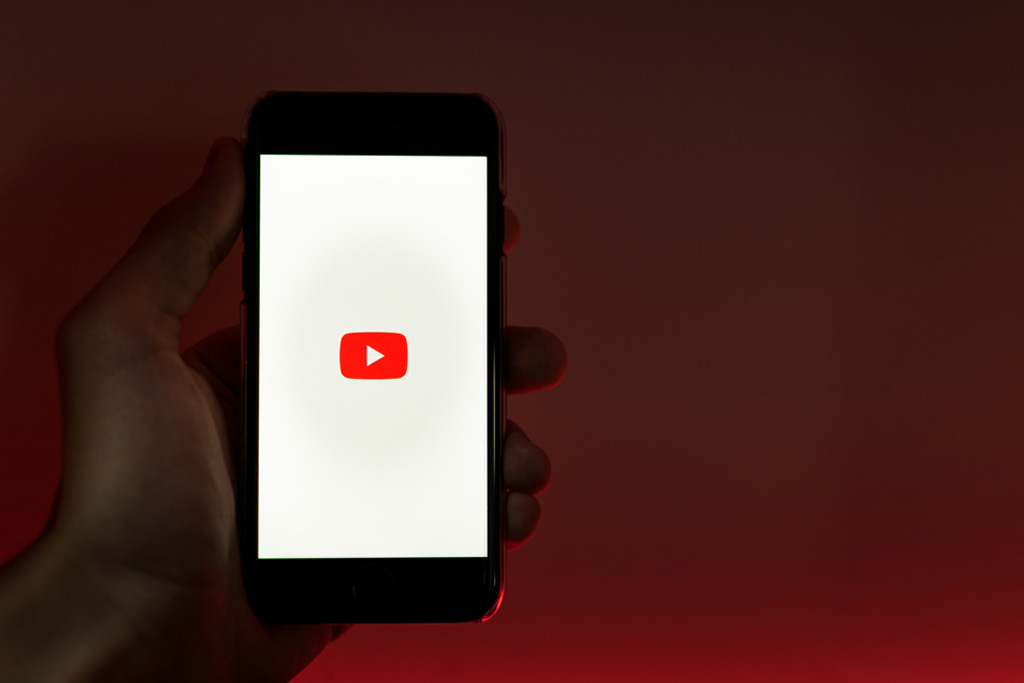The Evolution of YouTube: From Humble Beginnings to Global Dominance
In the vast landscape of the internet, few platforms have made as significant an impact on modern society as YouTube. From its humble beginnings as a simple online video-sharing website to its position as a dominant force in the digital world, YouTube has revolutionized the way we consume and create content. In this article, we will delve into the fascinating history of YouTube, exploring its founders, rise in popularity, current usage, and the potential trajectory for its future.
YouTube Founders and Early Days
YouTube was founded in February 2005 by three former PayPal employees: Chad Hurley, Steve Chen and Jawed Karim. The idea for the platform originated from their frustration with the difficulty of sharing one’s own videos online. In those days, the process of uploading and sharing videos was cumbersome, often requiring specialized software and technical knowledge.
The trio set out to create a user-friendly platform that would allow people to upload, share, and view videos easily. On April 23, 2005, YouTube.com was officially launched. The first video ever uploaded to the site was titled “Me at the zoo,” featuring co-founder Jawed Karim at the San Diego Zoo, and it marked the beginning of a digital revolution.
YouTube Rise in Popularity
In its early days, YouTube primarily hosted amateur and user-generated content, such as funny skits, home videos, and viral challenges. It was a free platform to watch videos with easier access than other websites. The platform’s simplicity and accessibility quickly struck a chord with internet users, and word-of-mouth spread like wildfire. As more people discovered the joys of uploading and sharing videos, YouTube’s popularity soared.
One key factor that contributed to YouTube’s rise was its embedding feature. This allowed users to easily embed YouTube videos on websites and blogs, increasing its reach beyond the platform itself. As a result, YouTube videos began to appear across the internet, becoming an integral part of online culture.
YouTube Google Acquisition
YouTube’s explosive growth caught the attention of tech giants, and in November 2006, just over a year after its launch, Google acquired YouTube for a staggering $1.65 billion. The acquisition provided YouTube with the necessary resources and infrastructure to scale rapidly and further solidify its position as the premier video-sharing platform.
Under Google’s ownership, YouTube continued to thrive, introducing new features, enhancing its user experience, and diversifying its content offerings. The platform expanded beyond short amateur videos to include longer-form content, such as vlogs, tutorials, music videos, and educational content.
The Expansion of YouTube (2011-present)
YouTube continued to grow and innovate in the following years, adding more features and functionalities to its platform and expanding its reach and impact around the world. Some of the features that YouTube introduced or improved in this period include:
| • Movies and shows rentals and purchases • Homepage redesign • Google services integration • YouTube Space studios • YouTube Rewind annual videos • YouTube Originals • YouTube Music • YouTube Kids |
• YouTube Gaming • YouTube Red (later YouTube Premium) • 360-degree videos / VR videos • Cards and end screens • Community tab • Super Chat and Super Stickers • YouTube TV • YouTube Shorts |
YouTube Today
Today, YouTube stands as one of the most visited websites in the world, with over two billion logged-in monthly users. Its vast library encompasses a wide range of content across numerous genres and languages, making it a global melting pot of creativity and information. Creating a YouTube channel has become a big business draw for many potential creators.
Content creators, known as YouTubers, have emerged as internet celebrities, amassing millions of subscribers and building strong communities around their channels. The coolest creators tend to produce content that resonates with their audiences, covering different topics like gaming, beauty, lifestyle, comedy, education, the hottest music videos, and more…all incentivizing users to join channels.
The landscape of YouTube channels and their influence may have shifted, but several favorite channels have historically stood out as some of the most influential and impactful. Here are a few notable ones:
PewDiePie – With over 100 million subscribers, PewDiePie, created by Felix Kjellberg, was for a long time the most subscribed individual YouTuber. Known for his gaming content, vlogs, and meme reviews, he has had a significant influence on internet culture.
T-Series – T-Series is an Indian music label and film production company that became one of the most subscribed channels on YouTube, surpassing PewDiePie in 2019. Its popularity reflects the platform’s increasing global reach and the power of Indian entertainment.
NigaHiga – Created by Ryan Higa, NigaHiga was one of the earliest YouTube channels to gain massive popularity. Ryan’s comedic skits, parodies, and relatable content made him a trailblazer in the YouTube community.
Smosh – Founded by Anthony Padilla and Ian Hecox, Smosh was one of the first YouTube channels to achieve mainstream success. Their sketch comedies and original content garnered a large following, and they have inspired many other creators.
Dude Perfect – Dude Perfect, a sports entertainment group, gained popularity with their impressive trick shots, challenges, and sports-related content. Their family-friendly appeal made them influential among a wide audience.
Holasoygerman (HolaSoyGerman / JuegaGerman) – Created by Germán Garmendia, this Spanish-language channel gained immense popularity in the Hispanic community with comedic sketches, vlogs, and commentary.
Markiplier – Mark Fischbach, known as Markiplier, is another influential gaming YouTuber. His energetic and enthusiastic gameplay commentary resonated with millions of viewers.
Vsauce – Michael Stevens, the creator of Vsauce, is renowned for his educational and thought-provoking content. His videos cover a wide range of topics, exploring fascinating questions about science, psychology, and the universe.
The Slow Mo Guys – Gavin Free and Daniel Gruchy’s channel showcases mesmerizing slow-motion footage of various experiments, captivating audiences with stunning visuals.
Unbox Therapy – Lewis Hilsenteger’s channel focuses on unboxing and reviewing the latest tech gadgets and products. It has become a go-to source for tech enthusiasts seeking honest and in-depth reviews.
YouTube as a Cultural Phenomenon
Beyond its commercial success, the YouTube community has played a crucial role in shaping popular culture. The platform has given a voice to marginalized communities and enabled underrepresented voices to reach a global audience. Social and political movements have been born and nurtured on YouTube, with videos galvanizing support for various causes and igniting discussions on critical issues.
YouTube’s impact on entertainment cannot be overstated either. Musicians, artists, and filmmakers now have a direct avenue to share their creations without the need for traditional gatekeepers. This democratization of content has disrupted the entertainment industry and empowered creators and community members to challenge the status quo.
How do YouTubers make money?
YouTube channels can generate revenue through various methods, enabling creators to turn their passion into a sustainable income source. Here are some of the primary ways YouTube channels make money:
- Ad Revenue: One of the most common ways channels make money is through ads displayed on their videos. YouTube’s AdSense program allows creators to earn a share of the revenue generated from ads shown before, during, or after their videos. The amount earned depends on factors such as video watch time, viewer demographics, and the number of ad views.
- Channel Memberships: YouTube offers a channel membership feature that allows creators to offer exclusive perks and content to their subscribers for a monthly fee. In return, members gain access to a custom loyalty badge, emojis, and other rewards as a way to support their favorite creators.
- Super Chat and Super Stickers: During live streams, viewers can purchase Super Chats or Super Stickers, which are paid messages or animated stickers displayed prominently in the live chats. Creators receive a portion of the revenue from these purchases.
- Merchandise Sales: Many YouTubers create and sell their merchandise, such as t-shirts, hoodies, and accessories, through platforms like Teespring or their website. This allows them to monetize their brand and engage with their audience in a more tangible way.
- Brand Sponsorships and Partnerships: As channels grow in popularity, they may attract brand sponsorships and partnerships. Companies pay creators to promote their products or services in sponsored videos or integrate them organically into their content.
- YouTube Premium Revenue: YouTube Premium is a subscription-based service that offers ad-free viewing, offline downloads, and access to YouTube Originals. Creators receive a portion of the revenue generated from YouTube Premium subscribers who watch their content.
- Crowdfunding: Some creators use crowdfunding platforms like Patreon or Kickstarter to allow their viewers to support them directly. Supporters can contribute monthly donations or one-time payments to help sustain the channel.
- Fan Funding: YouTube’s fan funding feature, formerly known as YouTube Gaming Sponsorships, allows viewers to make voluntary payments to support their favorite creators during live streams.
- YouTube Shorts Fund: For creators who created engaging and popular YouTube Shorts, there was the potential to participate in the YouTube Shorts Fund, which provided financial incentives based on the performance of their short-form videos.
It’s worth noting that the amount of money a channel can make varies widely depending on factors such as the number of subscribers, video views, content niche, and engagement level. Additionally, YouTube has specific eligibility requirements for each monetization feature, and channels must adhere to YouTube’s content policies and community guidelines to participate in these programs.
Challenges and Controversies
Despite its positive impact, YouTube has faced its fair share of challenges and controversies. The platform has grappled with issues related to copyright infringement, hate speech, misinformation, and inappropriate content targeted at children. The company has made efforts to address these concerns through content policies, stricter community guidelines, and investments in content moderation technology.
Additionally, YouTube has faced criticism from creators who feel that changes to the platform’s algorithms and monetization policies have negatively impacted their ability to earn revenue and reach their audience effectively. Striking the balance between content moderation and maintaining an open and creative platform has proven to be an ongoing challenge for YouTube.
The Future of YouTube
Looking ahead, the future of YouTube seems promising yet complex. As technology advances, YouTube will likely continue to evolve, adapting to the changing preferences and habits of its vast user base. Live streaming, virtual reality, augmented reality, and interactive content are some areas that hold potential for the platform’s expansion.
YouTube’s commitment to original content production, evident through the launch of YouTube Originals, may intensify in the coming years. We could see a further blurring of lines between traditional media and digital content, with YouTube becoming a significant player in the entertainment industry.
Moreover, YouTube’s role in education and learning could grow substantially. The platform has already become a go-to resource for tutorials, educational videos, and skill development content. As digital learning becomes more prevalent, YouTube may play a vital role in shaping the future of education and knowledge dissemination.
From its modest beginnings as a start-up in a garage to becoming a cultural and technological juggernaut, YouTube’s journey is nothing short of extraordinary. Its founders’ vision to create a seamless platform for video sharing transformed the way we consume and engage with content, propelling YouTube to become a global phenomenon.
As YouTube continues to shape our digital landscape, its influence on society and culture will remain indelible. The platform’s success lies not only in its technological prowess but also in its ability to bring people together, foster creativity, and amplify diverse voices. As we look to the future, one thing is certain: YouTube’s story is far from over, and its impact will be felt for generations to come.
Photo by Szabo Viktor on Unsplash


